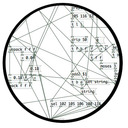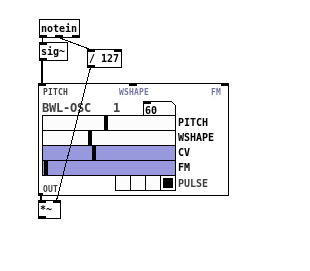-
 alexandros
posted in technical issues • read more
alexandros
posted in technical issues • read moreAFAIK, Ofelia is no longer maintained. Perhaps a more recent fork of it is ofxOfeliaExtended (https://github.com/Jonathhhan/ofxOfeliaExtended) by @jona if I'm not mistaken.
-
 alexandros
posted in technical issues • read more
alexandros
posted in technical issues • read moreI think I have 0.55.0 or something. Wanna write to Pd's mailing list, or file an issue on GitHub?
-
 alexandros
posted in technical issues • read more
alexandros
posted in technical issues • read moreWhat do you mean by all inputs? Mouse and keyboard? I've never faced this issue, but I usually SSH into the Pi when patching Pd in it. Did you try that?
BTW, compiling is not complicated at all. -
 alexandros
posted in technical issues • read more
alexandros
posted in technical issues • read moreIs it about finding extenral objects? First off, you'll need to install all these externals to the computer you want to load your patch in. If you do that, why not set their paths while downloading them? Or are you copying the externals from your computer to the other one? If that is the case, you could also put all the externals you use in a single directory and then set that in the other computer's Pd paths. It shouldn't be a lot of work.
-
 alexandros
posted in technical issues • read more
alexandros
posted in technical issues • read moreOn Linux, the preferences are saved in the home directory as .pdsettings. So, if I were to transfer my Pd preferences to another Linux computer, I would just copy that file to the other computer's home directory. On macOS, I don't know where this file is, but it should be something similar.
-
 alexandros
posted in technical issues • read more
alexandros
posted in technical issues • read moreHere's the link to the book @fer mentions: https://mitpress.mit.edu/9780262014410/designing-sound/
-
 alexandros
posted in technical issues • read more
alexandros
posted in technical issues • read more@lacuna small correction: as of Pd-0.55.0, the Deken plugin is found under Tools in Pd's menu.
-
 alexandros
posted in technical issues • read more
alexandros
posted in technical issues • read moreThat's strange. Remove the word "byte" from lines 37, 44, 45, 50, and 53. That should do it.
-
 alexandros
posted in technical issues • read more
alexandros
posted in technical issues • read moreTakes a bit of reading. You might want to check this tutorial https://drymonitis.me/wp-content/uploads/2023/09/Arduino_for_Pders.pdf
and these abstractions https://github.com/alexdrymonitis/Arduino_Pd -
 alexandros
posted in technical issues • read more
alexandros
posted in technical issues • read moreControlling digital I/O from Pd is not so difficult. What is it exactly that you are trying to do? You want to activate-deactivate digital pins?
-
 alexandros
posted in technical issues • read more
alexandros
posted in technical issues • read moreI2C is a special protocol that enables communication between devices (e.g. your Arduino with another chip). I'm not use Firmata supports I2C, but I'm pretty sure you'll be better off writing your own code (probably based on examples from the sensor you want to use). Which sensor is this?
-
 alexandros
posted in technical issues • read more
alexandros
posted in technical issues • read moreI forgot to add a division object there. The patch should be as follows:
[notein] | [/ 127] | [sig~] | [automatonism_module~]The pitch input in Automatonism takes values between 0 and 1 and multiplies them internally by 127 before sending them to [mtof].
-
-
 alexandros
posted in extra~ • read more
alexandros
posted in extra~ • read more@spluta I want to investigate the sine wave to band-limited sawtooth example a bit deeper. Is the Python code and the training dataset available? I can't seem to find it in the RTNeural_Plugin folder.
-
 alexandros
posted in technical issues • read more
alexandros
posted in technical issues • read moreIf I'm not mistaken, Miller uses Fedora. Also, he's about to release Pd-0.56, so it's a good moment to inform him about it. You should probably write to Pd's mailing list which he reads.
-
 alexandros
posted in patch~ • read more
alexandros
posted in patch~ • read moreAndy Farnell has simulated the sound of water in Pd. Check his book "Designing Sound".
-
-
 alexandros
posted in news • read more
alexandros
posted in news • read moreFor the life of me, I can't figure out how to use the
colorsmessage! If I sendcolors #ff00ffor something similar to pd, I get abad arguments to colors message. -
 alexandros
posted in technical issues • read more
alexandros
posted in technical issues • read moreYou're first mentioning police sirens, and at the end of your post you mention that the Arduino will play through speakers. What is the actual sound source you want to use? If it's some digital synthesis that is played through speakers, then you're much better off with Pd than with the Arduino. If you indeed want to control police sirens in some way, I guess the Arduino could do it, but I have no idea how police sirens work (I tend to avoid them, you see
 ).
). -
 alexandros
posted in technical issues • read more
alexandros
posted in technical issues • read moreDoesn't [tabread4~] apply cubic interpolation? If you store a ramp to a table, you could use that with [line~] to read through it, couldn't you?

